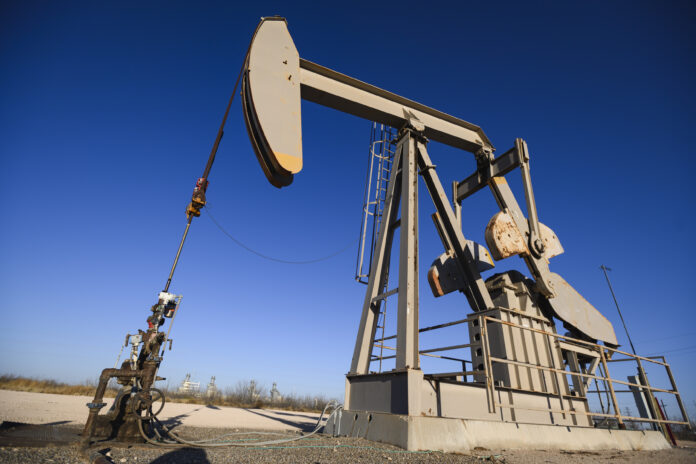Liquefied natural gas exports are a relatively new thing in the American energy industry and they are a very big thing that’s getting bigger by the day.
Now that nation after nation is shunning Russia as a supplier, the world is crying for the United States, Qatar, Australia, Malaysia and other countries to make up the difference.
The LNG scenario is a complex and extremely high-dollar one, but natural gas is selling for five times its U.S. price in the key markets of India, China, South Korea, Japan and the European Union.
Dustin Meyer, vice president of natural gas markets for the American Petroleum Institute, and Texas Independent Producers & Royalty Owners Association President Ed Longanecker say American LNG exporters are selling all they can ship.
“The Qataris have been exporting it since the early 2000s, but it is a much more recent phenomenon here,” Meyer said from Washington, D.C. “We started in 2016 at LNG export terminals that were originally import terminals. Right now, we’re exporting around 13 billion cubic feet per day.
“The United States’ daily natural gas production is 95 billion cubic feet and LNG is a rising percentage of the overall market. The European demand during this period of conflict between Russia and Ukraine is 40 billion cubic feet per day. Long range, the market is very strong, We also export six billion cf/d via pipeline to Mexico.”
While natural gas was selling in the U.S. for $7.84 per thousand cubic feet Wednesday because American production is so great, Meyer said, overseas LNG peaked before Christmas at $65 per mcf and now is going for $35. The domestic natural gas price was only about $3.50 per mcf from 2008 till last year, so the price is much greater here, too.
Having each cost from $10 billion to $20 billion to build and with each one having taken 2 1/2 to four years to complete, only seven export terminals are in operation at Corpus Christi, Freeport, Kenai, Alaska, Hackberry and Sabine, La., Cove Point, Md., and Elba Island, Ga., owned respectively by Cheniere Energy, Freeport LNG Development, Trans-Foreland Pipeline Co., Sempra-Cameron LNG, Cheniere, Berkshire Hathaway-Dominion Energy-Brookfield Asset Management and Kinder Morgan-Global Energy Partners, according to the Federal Energy Regulatory Commission.
Supplied by pipelines, the terminals freeze the natural gas to 260 degrees below zero to liquefy it and then load it onto a monthly average of 100 ships, Meyer said. Weighing 45 percent as much as water, LNG is odorless, colorless, non-toxic and non-corrosive.
When it reaches its destinations, it is thawed out or “regassified,” having had the dust, acid gases, helium, water and heavy hydrocarbons removed to make a mixture of mostly methane and a little ethane.
The FERC says export terminals are under construction at Cameron Parish and Plaquemines Parish, La., and Sabine Pass while 12 have been approved but are not yet being built, having survived a three-step application process that takes two years with FERC and the U.S. Department of Energy. “The resources we have in this country are simply enormous.” Meyer said.
“It’s just a question if we will be allowed to build the pipelines that are necessary to support this buildout.”
In January, Longanecker said, the U.S. topped Qatar and Australia as the world’s leading exporter of LNG with 354 billion cf. “America has led the world in natural gas production, surpassing Russia and Iran, thanks largely to Texas, which singlehandedly accounts for roughly a quarter of U.S. natural gas production,” the TIPRO president said.
“Thanks to our prolific production, in February Europe received nearly 70 percent of all exported U.S. LNG cargoes. More than 85 percent of the additional planned U.S. LNG export capacity will be on the Gulf Coast and it will be largely supplied by Texas natural gas.
“Not only was LNG from the U.S. able to meet European demand in a time of crisis, but U.S. natural gas, when compared to Russian natural gas, is far, far cleaner. Russia’s flaring intensity is 143 percent higher than the United States’ and 239 percent higher than the Permian Basin’s, demonstrating that America produces natural gas in a much more sustainable fashion than other global producers.”
Longanecker said the annual global demand for LNG will reach 700 million metric tons, or 28 trillion cf, by 2040, but America’s annual exports will only increase by 65 percent and reach 5.86 trillion cf by 2033. “In the near term the Biden administration is pushing for increased LNG exports, but it is not enough,” he said.
“To truly promote American energy security and support the expansion of LNG export capacity, the administration must do more. This includes expediting permits for export facilities and pipeline infrastructure and creating a more stable regulatory environment for domestic oil and gas producers to encourage investment in these essential long-term projects.”




